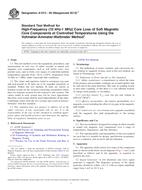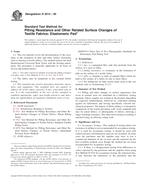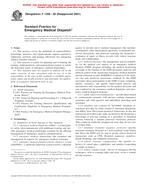1.1 Purpose and Application – This guide summarizes the equipment, field procedures, and interpretation methods for the assessment of subsurface materials using the metal detection method. Metal detectors respond to the presence of both ferrous and nonferrous metals by inducing eddy currents in conductive objects. Metal detectors are either frequency domain (continuous frequency or wave) or time domain (pulsed) systems. A wide range of metal detectors is commonly available.
1.1.1 Metal detectors can detect any kind of metallic material, including both ferrous metals such as iron and steel, and non-ferrous metals such as aluminum and copper. In contrast, magnetometers only detect ferrous metals.
1.1.2 Metal detector measurements can be used to detect the presence of buried metal trash, drums (Tyagi et al, 1983) (1) and tanks, abandoned wells (Guide D6285); to trace buried utilities; and to delineate the boundaries of landfill metal and trench metal. They are also used to detect metal based unexploded ordnance (UXO).
1.2 Limitations:
1.2.1 This guide provides an overview of the metal detection method. This guide does not provide or address the details of the theory, field procedures, or interpretation of the data. References are included for that purpose and are considered an essential part of this guide. It is recommended that the user of this guide be familiar with the references cited and with the ASTM standards D420, D653, D5088, D5608, D5730, D5753, D6235, D6429, and D6431.
1.2.2 This guide is limited to metal detection measurements made on land. The metal detection method can be adapted for a number of special uses on land, water, airborne and ice.
1.2.3 The approaches suggested in this guide for the metal detection method are commonly used, widely accepted, and proven. However, other approaches or modifications to the metal detection method that are technically sound may be substituted.
1.2.4 This guide offers an organized collection of information or a series of options and does not recommend a specific course of action. This document cannot replace education or experience and should be used in conjunction with professional judgment. Not all aspects of this guide may be applicable in all circumstances. This ASTM standard is not intended to represent or replace the standard of care by which the adequacy of a given professional service must be judged, nor should this document be applied without consideration of a project's many unique aspects. The word “Standard“ in the title of this document means only that the document has been approved through the ASTM consensus process.
1.3 The values stated in SI units are regarded as standard. The values given in parentheses are inch-pound units, which are provided for information only and are not considered standard.
1.4 Precautions:
1.4.1 It is the responsibility of the user of this guide to follow any precautions in the equipment manufacturer’s recommendations and to establish appropriate health and safety practices.
1.4.2 If the method is used at sites with hazardous materials, operations, or equipment, it is the responsibility of the user of this guide to establish appropriate safety and health practices and to determine the applicability of any regulations prior to use.
1.4.3 This standard does not purport to address all of the safety concerns, if any, associated with its use. It is the responsibility of the user of this standard to establish appropriate safety and health practices and determine the applicability of regulatory requirements prior to use.
Product Details
- Published:
- 05/01/2011
- Number of Pages:
- 8
- File Size:
- 1 file , 180 KB
- Redline File Size:
- 2 files , 280 KB


